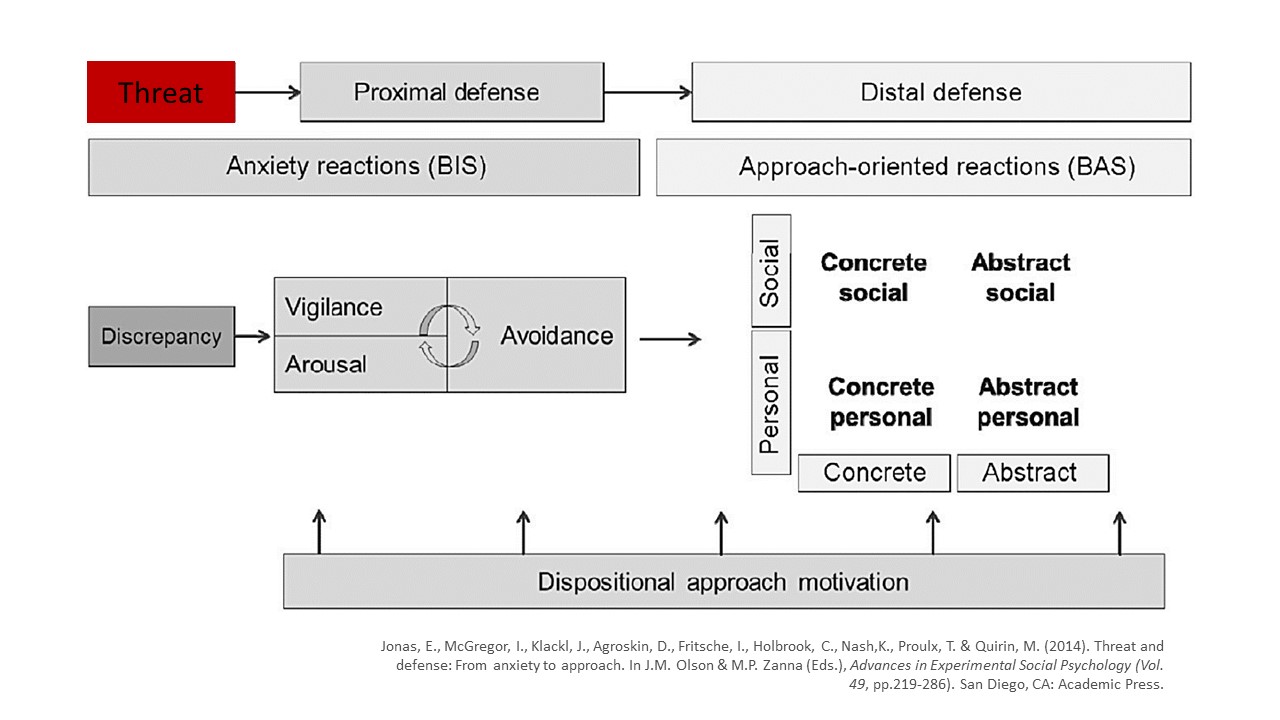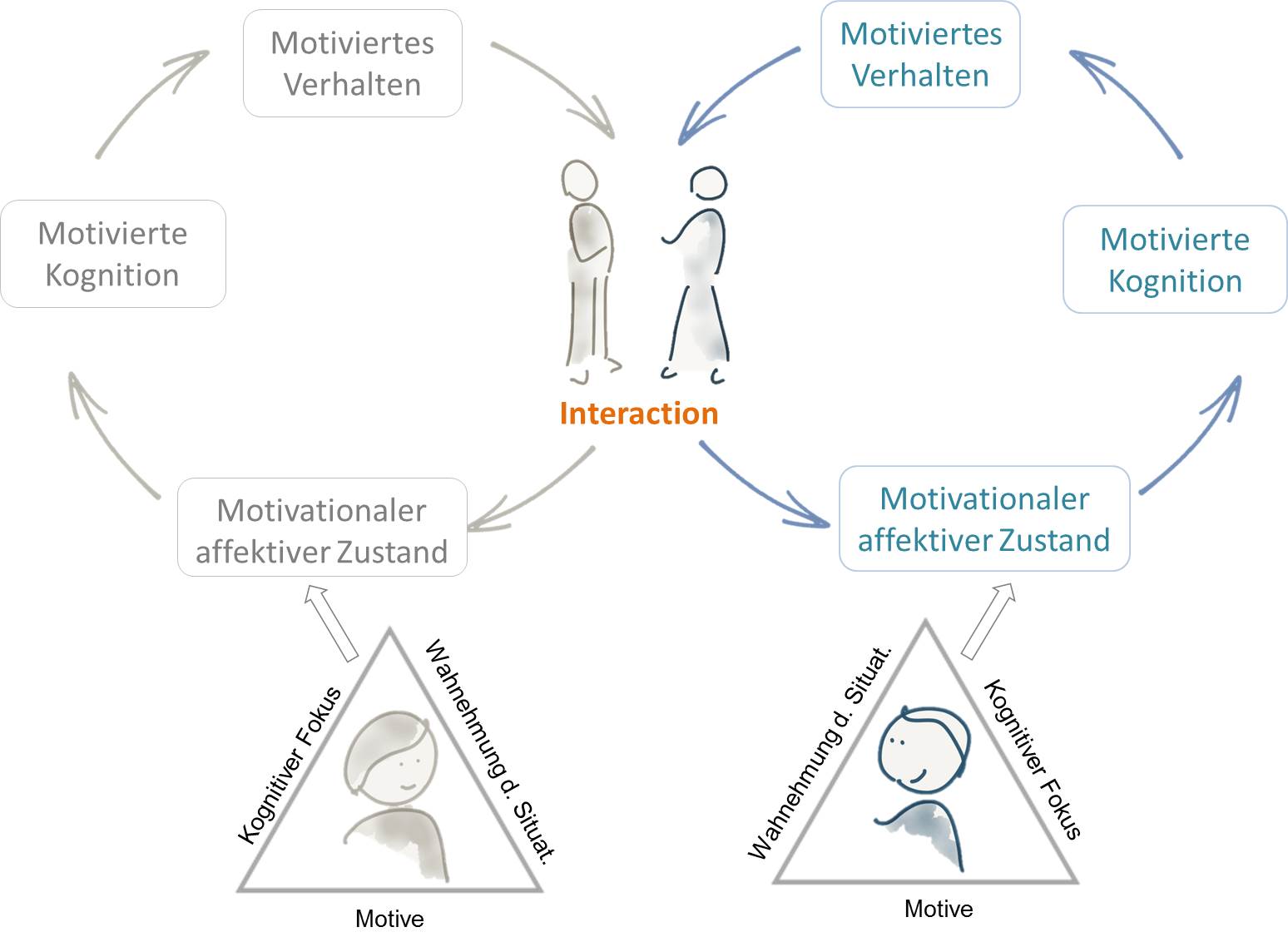How is behavior in social interactions shaped by desires, needs and concerns? Two models provide a framework for our research: the General Process Model of Threat and Defense and the Loop2Loop model.
The General Process Model of Threat and Defense ( Jonas et al., 2014) explains how people react to perceived threats, and why. Motivated social cognition often develops in threatening situations. Accordingly, research on the influence of threats on social cognition and interaction is at the center of many of our research projects. While unambiguous threats (e.g. threats to physical integrity) usually trigger fear, panic and escape behavior (active avoidance), we are more interested in ambiguous threats that trigger uncertainty and put people in a state of anxious inhibition and passive avoidance. Typically, these threats are experienced as particularly threatening when fundamental needs or motives are affected, such as identity (the need to know who you are), transcendence (that something of you remains when you die), social connectedness (belonging to others/groups), control (being able to act effectively) and meaning (understanding the world). While these threats are considered individually in different psychological research traditions, we aim for an integrative and comparative view. You can learn more about this model in the Threat section.

The Loop2Loop model provides another theoretical framework for our research. In social interactions, two or more people enter into a social exchange with each other that is characterized by the needs, motives, cognitions and actions of the exchange partners involved. We have summarized the interaction of these factors in the Loop2Loop model (see Jonas, 2015; Jonas and Bierhoff, 2017; Jonas and Steindl, 2015; Jonas and Mühlberger, 2017), which describes how motivational-affective states and motivated cognitions arise from the interplay of personal and situational characteristics (motives, salient memory structures or cognitive focus, perception of the situation), which lead to corresponding motivated behavior. This behavior becomes visible to the other person in the social interaction and in turn triggers a sequence of motivated cognitions and actions according to the person and situation variables (see figure, drawing by Vicky König).In our research area “Approach in social interactions” in particular, we rely on the Loop2Loop model to help us better understand counseling processes.
Especially in our research on Social interaction we rely on the Loop2Loop model to better understand counseling processes.






